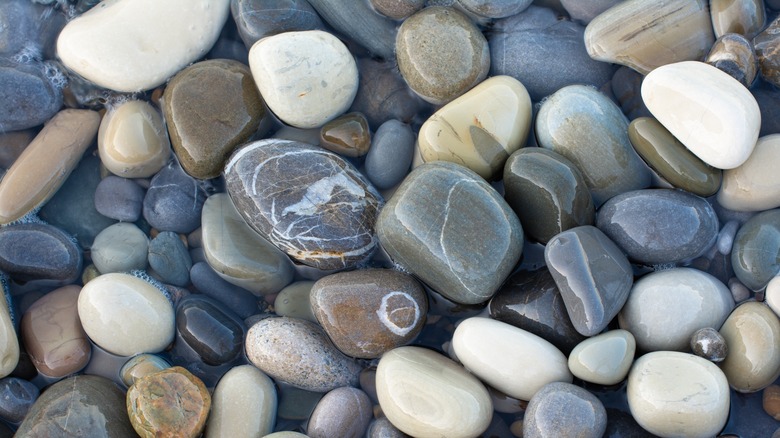China's Stir-Fried Rocks Just Might Be The Snack Of The Summer
Hundreds of years ago, hungry fishermen navigating the Yangtze River for long periods of time would often run low on food given their limited ability to safely store food on their boats. Without vegetables or proteins available, they opted to get their minerals by sucking on heated stones from the river.
While the prevalence of preparing suodui — which translates to "suck and discard" — waned after many years, its popularity is on the rise, particularly after a video of it being prepared at a Chinese market went viral on social media. In the video, the cook is shown stir-frying stones with peppers, garlic, rosemary, and purple perilla (a minty plant often used in Asian dishes).
Because the rocks are submerged in the water, it's been reported that they tend to take on the flavor of the various aquatic life in the river. The flavor can range from mimicking that of oysters or fish to clams or other types of seafood like shrimp.
How do you prepare stir-fried rocks?
A bowl of stir-fried rocks at the market can cost around 16 yuan, which equates to about $2.23. But, even before the recent viral video, some people were already preparing suodui elsewhere, either at home or in restaurants.
One TikTok user in Toronto recreated a recipe he had seen that called for sautéing the rocks with coriander, green onions, soybean paste, peppers, garlic, butter, and ginger. A chef in Hubai is shown in a video on YouTube both sourcing and preparing the rocks, noting that it's important to use lard for sauteeing. He also adds peppers, herbs, and monosodium glutamate, and in a second version, adds bacon as well. Another key element of the dish was how clean the water surrounding the rocks is, and the chef drinks it to prove that point.
While some social media users have expressed concerns that range from hygiene issues to the risk of choking, there are a number of positive responses as well, noting that the dish is flavorful and the rocks keep the other ingredients warm. Outside of the obvious caveat to not swallow the rocks, the only other warning is to be sure to use ones that are fresh to capture the most flavor.


